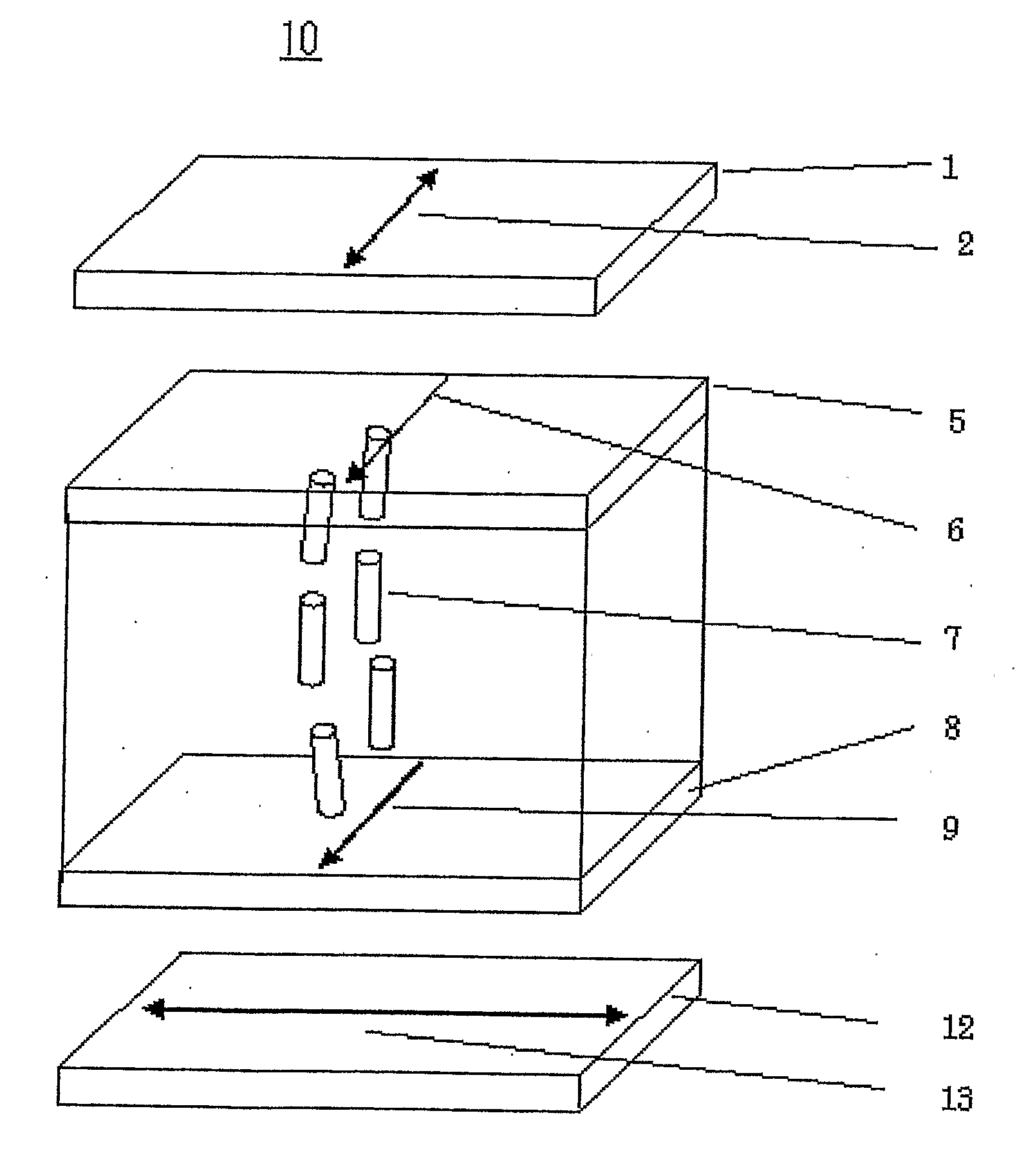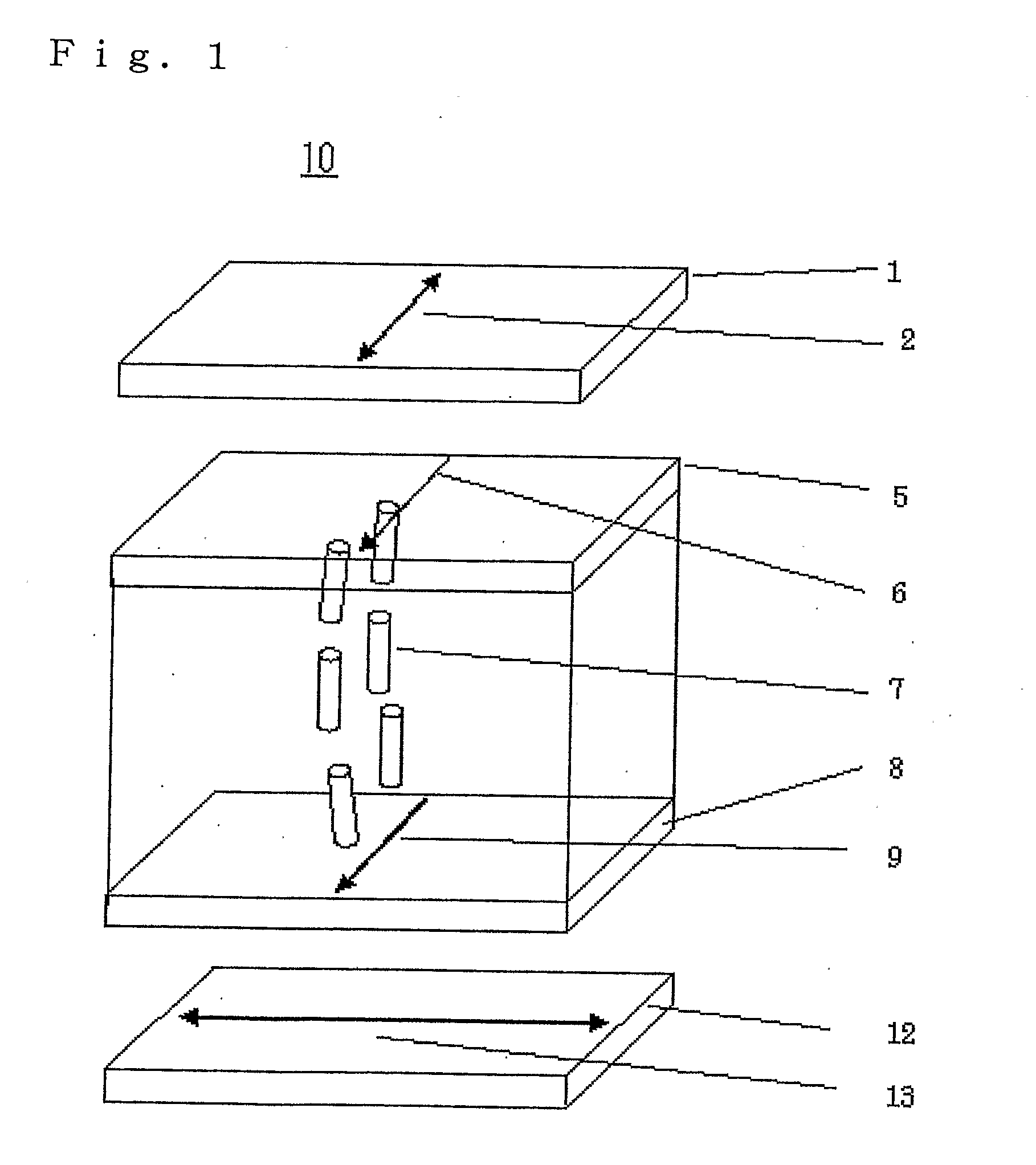Polymer Film, Polarizing Plate Protective Film, Polarizing Plate and Liquid Crystal Display Device
a liquid crystal display device and protective film technology, applied in the direction of optics, polarising elements, instruments, etc., can solve the problems of large dependence of viewing angle, large rush for liquid crystal display devices, large change of contrast and hue, etc., and achieve low viewing angle dependence of hue
- Summary
- Abstract
- Description
- Claims
- Application Information
AI Technical Summary
Benefits of technology
Problems solved by technology
Method used
Image
Examples
example 1
Formation of Forward Wavelength Dispersion Film 101
[0304]The following composition was thrown into a mixing tank and stirred to dissolve respective ingredients, to prepare a cellulose acylate solution A.
Composition of Cellulose Acylate Solution ACellulose acetate; acetyl100.0 parts by masssubstitution degree: 2.94, averagepolymerization degree: 310Additive D-5 12.0 parts by massMethylene chloride (first solvent)402.0 parts by massMethanol (second solvent) 60.0 parts by mass
[0305]The following composition was thrown into a dispersing machine and stirred to dissolve respective soluble ingredients, to prepare a matting agent liquid.
Composition of Matting Agent LiquidSilica particles having an average 2.0 parts by massparticulate size of 20 nm (AEROSILR972, by AEROSIL)Methylene chloride (first solvent)75.0 parts by massMethanol (second solvent)12.7 parts by massCellulose acylate solution A10.3 parts by mass
[0306]The following composition was thrown into a mixing tank and stirred with he...
example 2
Formation of Forward Wavelength Dispersion Films 102 to 106
[0308]Forward wavelength dispersion films 102 to 106 were prepared in the same way as described above except for changing the type of cellulose acylate, the type and addition amount of the additive, and the film thickness to the content as listed in Table 1.
example 3
Formation of Optical Compensatory Film 301
11>
[0311]The following composition was thrown into a mixing tank and stirred to dissolve respective ingredients, to prepare a cellulose acylate solution 11.
Composition of Cellulose Acylate Solution 11Cellulose acetate; acetyl100.0 parts by masssubstitution degree: 2.80,polymerization degree: 420Triphenyl phosphate (plasticizer) 6.0 parts by massBiphenyl phosphate (plasticizer) 3.0 parts by massMethylene chloride (first solvent)402.0 parts by massMethanol (second solvent) 60.0 parts by mass
12>
[0312]The following composition was thrown into a dispersing machine and stirred to dissolve respective soluble ingredients, to prepare a matting agent liquid 12.
Composition of Matting Agent Liquid 12Silica particles having an average 2.0 parts by massparticulate size of 20 nm (AEROSILR972, by Nippon Aerosil Co., Ltd.)Methylene chloride (first solvent)75.0 parts by massMethanol (second solvent)12.7 parts by massCellulose acylate solution 1110.3 parts by ...
PUM
| Property | Measurement | Unit |
|---|---|---|
| wavelength range | aaaaa | aaaaa |
| wavelength | aaaaa | aaaaa |
| viewing angle property | aaaaa | aaaaa |
Abstract
Description
Claims
Application Information
 Login to View More
Login to View More - R&D
- Intellectual Property
- Life Sciences
- Materials
- Tech Scout
- Unparalleled Data Quality
- Higher Quality Content
- 60% Fewer Hallucinations
Browse by: Latest US Patents, China's latest patents, Technical Efficacy Thesaurus, Application Domain, Technology Topic, Popular Technical Reports.
© 2025 PatSnap. All rights reserved.Legal|Privacy policy|Modern Slavery Act Transparency Statement|Sitemap|About US| Contact US: help@patsnap.com



